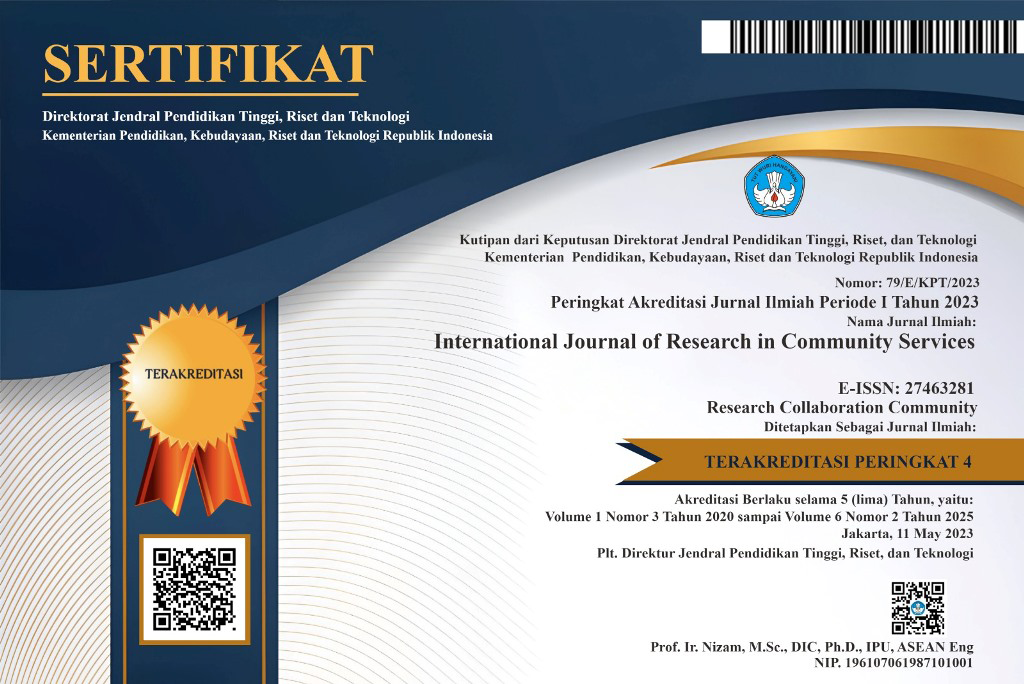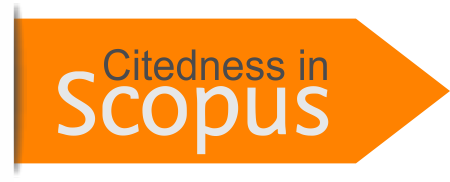DIFFERENCES IN BLOOD SUGAR LEVELS BEFORE AND AFTER MORNING AND AFTERNOON WALK IN TYPE II DIABETES MELITUS PATIENTS AT BABAKANSARI PUSKESMAS
Abstract
Full Text:
PDFReferences
Ahmed, S. E., Mustafa, E., & AbdulRaheem, E. M. (2013). Assessment of plasma levels of fasting blood glucose, triglycerides, total cholesterol, and HbA1c in patients with type 2 diabetes mellitus. Diabetes, 13, 16.
Andersen, M. B., Fuglsang, J., Ostenfeld, E. B., Poulsen, C. W., Daugaard, M., & Ovesen, P. G. (2021). Postprandial interval walking—effect on blood glucose in pregnant women with gestational diabetes. American Journal of Obstetrics & Gynecology MFM, 3(6), 100440.
Baschieri, F., & Cortelli, P. (2019). Circadian rhythms of cardiovascular autonomic function: Physiology and clinical implications in neurodegenerative diseases. Autonomic Neuroscience, 217, 91-101.
Bastaki, S. (2005). Diabetes mellitus and its treatment. Dubai Diabetes And Endocrinology Journal, 13, 111-134.
Bhaskarabhatla, K. V., & Birrer, R. (2005). Physical activity and diabetes mellitus. Comprehensive therapy, 31(4), 291-298.
Biadgo, B., Abebe, S. M., Baynes, H. W., Yesuf, M., Alemu, A., & Abebe, M. (2017). Correlation between serum lipid profile with anthropometric and clinical variables in patients with type 2 diabetes mellitus. Ethiopian journal of health sciences, 27(3), 215-226.
Black, J. M., & Hawks, J. H. (2014). Medical Surgical Nursing: Clinical Management of Expected Results. Elsivier Singapore.
Colberg, S. R., Sigal, R. J., Yardley, J. E., Riddell, M. C., Dunstan, D. W., Dempsey, P. C., ... & Tate, D. F. (2016). Physical activity/exercise and diabetes: a position statement of the American Diabetes Association. Diabetes care, 39(11), 2065-2079.
Forlenza, G. P., Cameron, F. M., Ly, T. T., Lam, D., Howsmon, D. P., Baysal, N., ... & Buckingham, B. A. (2018). Fully closed-loop multiple model probabilistic predictive controller artificial pancreas performance in adolescents and adults in a supervised hotel setting. Diabetes technology & therapeutics, 20(5), 335-343.
Gikas, A., Sotiropoulos, A., Pastromas, V., Papazafiropoulou, A., Apostolou, O., & Pappas, S. (2009). Seasonal variation in fasting glucose and HbA1c in patients with type 2 diabetes. primary care diabetes, 3(2), 111-114.
Gulve, E. A. (2008). Exercise and glycemic control in diabetes: benefits, challenges, and adjustments to pharmacotherapy. Physical Therapy, 88(11), 1297-1321.
Hanusz, Z., Tarasinska, J., & Zielinski, W. (2016). Shapiro–Wilk test with known mean. REVSTAT-Statistical Journal, 14(1), 89-100.
Hayashi, A., Oguchi, H., Kozawa, Y., Ban, Y., Shinoda, J., & Suganuma, N. (2018). Daily walking is effective for the management of pregnant women with gestational diabetes mellitus. Journal of Obstetrics and Gynaecology Research, 44(9), 1731-1738.
Kasmad, K., Abdillah, A. J., & Karnelia, M. (2022). The Impact of Using Brisk Walking Exerrcise in Lower Blood Sugar of Patients with Type 2 Diabetes Mellitus. International Journal of Nursing Information, 1(1), 10-17.
Kim, Y. S., Kim, H. S., & Kim, Y. L. (2019). Effects of a web-based self-management program on the behavior and blood glucose levels of women with gestational diabetes mellitus. Telemedicine and e-Health, 25(5), 407-414.
, A. (2013). Assessing regression to the mean effects in health care initiatives. BMC medical research methodology, 13, 1-7.
Saito, T., Watanabe, M., Nishida, J., Izumi, T., Omura, M., Takagi, T., ... & Zensharen Study for Prevention of Lifestyle Diseases Group. (2011). Lifestyle modification and prevention of type 2 diabetes in overweight Japanese with impaired fasting glucose levels: a randomized controlled trial. Archives of internal medicine, 171(15), 1352-1360.
Shi, S. Q., Ansari, T. S., McGuinness, O. P., Wasserman, D. H., & Johnson, C. H. (2013). Circadian disruption leads to insulin resistance and obesity. Current Biology, 23(5), 372-381.
Van den Berghe, G. (2004). How does blood glucose control with insulin save lives in intensive care?. The Journal of clinical investigation, 114(9), 1187-1195.
Wagner, K. H., & Brath, H. (2012). A global view on the development of non communicable diseases. Preventive medicine, 54, S38-S41.
DOI: https://doi.org/10.46336/ijrcs.v4i2.422
Refbacks
- There are currently no refbacks.
Copyright (c) 2023 International Journal of Research in Community Services

This work is licensed under a Creative Commons Attribution 4.0 International License.
Published By:
IJRCS: Jalan Riung Ampuh No. 3, Riung Bandung, Kota Bandung 40295, Jawa Barat, Indonesia
Indexed By:

This work is licensed under a Creative Commons Attribution 4.0 International License.
View My Stats








